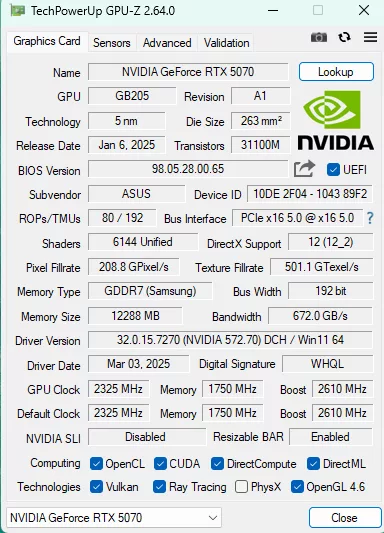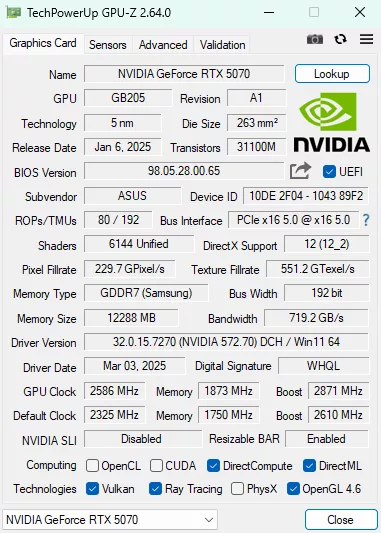Overclocking ASUS TUF Gaming GeForce RTX 5070 OC Edition
To overclock the ASUS TUF Gaming GeForce RTX 5070 OC Edition, we used ASUS GPU Tweak III (v1.8.8.0), which was downloaded from the support section of the video card’s webpage. GPU Tweak is a very familiar software and is quite straightforward to use.
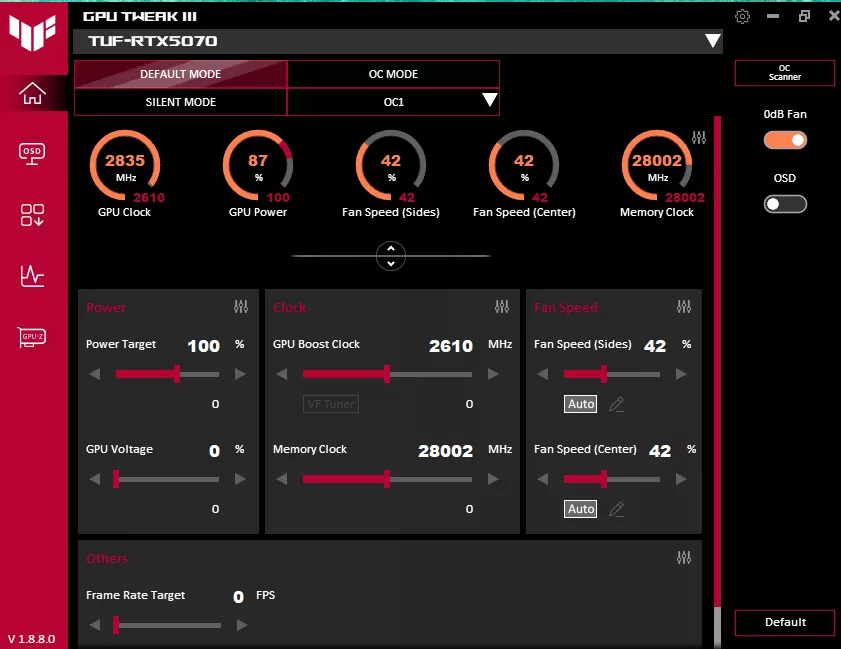
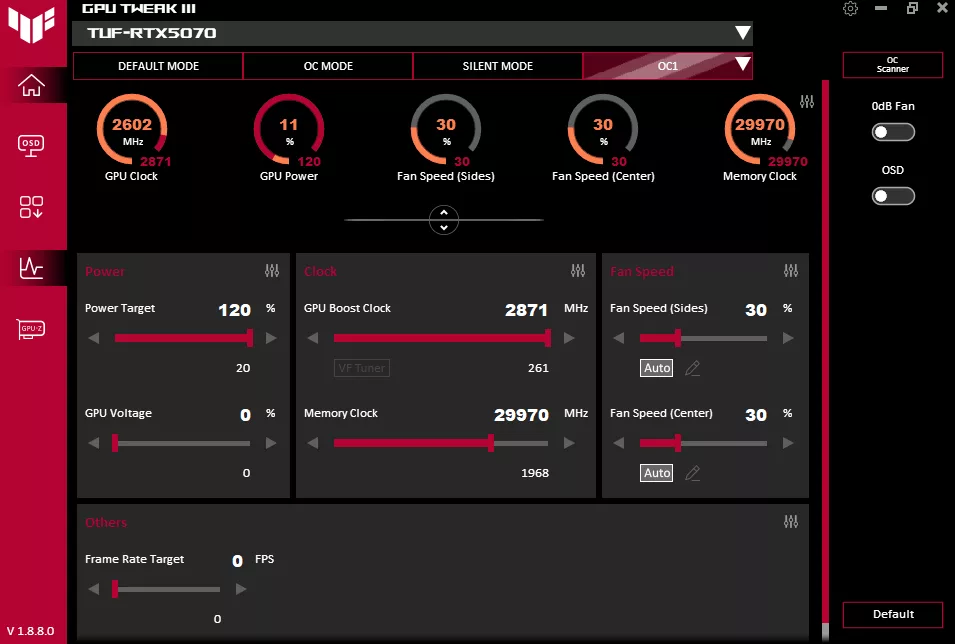
For the ASUS TUF Gaming GeForce RTX 5070 OC Edition, we had the ability to adjust all settings. This includes: GPU Boost clock, memory clock, GPU core voltage, and power target. Fan cycles are also adjustable if needed. We used our Cyberpunk 2077 manual run-through for testing purposes and logged sensor data from GPUZ.
Overclocking involved taking the GPU Boost clock all the way out to the right in GPU Tweak, and there was nothing left. The maximum setting was +261MHz. Memory was increased to +1968MHz. The power target was taken all the way out to the maximum as well, providing up to a +20% for the extra power limit. At 20%, that improves the maximum power from 250W up to 300W, giving you more headroom for overclocking, which is a very large range for the GeForce RTX 5070 GPU that ASUS has provided.
Trials showed us a couple of things. First, anything beyond our final memory setting resulted in an unstable card. While there was room on the slider, there was no more room for the card to go higher. The same held true for the Boost clock; this seems to be a power limitation.
We note that at our final settings, the ASUS TUF Gaming GeForce RTX 5070 OC Edition was perfectly stable, and the temperatures were remarkably low while the fans were inaudible. Final settings: Boost Clock: +261MHz/2871MHz Memory: +1968MHz/29970MHz (30Gbps).
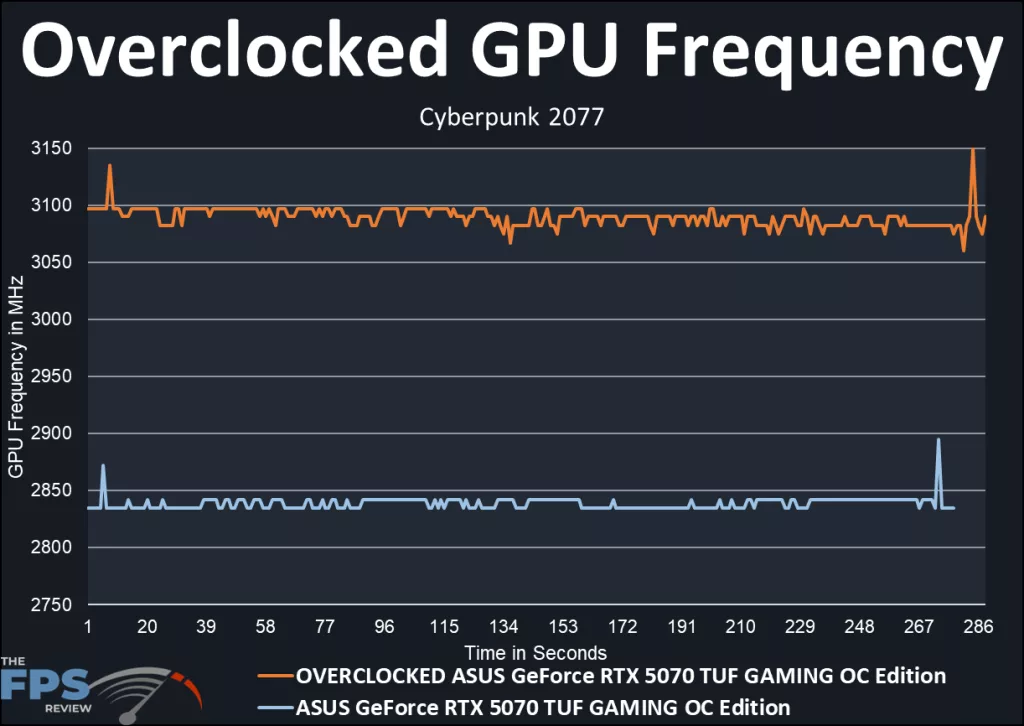
The graph above shows our results in real-time gaming. The blue line represents the default card out-of-the-box with its factory overclock of 2610Mhz. One can see the Boost clock is well above that at an average of 2,839MHz or 8% over the reference Boost. The orange line is our achieved overclock.
The average Boost overclocked is 3090MHz. This value is 8% over the real-time Boost. That’s pretty darn good right there. All in all, we were able to achieve a Boost clock 23% over the NVIDIA reference Boost clock and 8% over the real-time factory overclock out-of-the-box. We will have to see how that correlates with real-time gaming results, but all in all, this card is a pretty good overclocker. The bonus is the cooling is superb, and the fans remained silent. We did not have to adjust the fan cycle from default.
